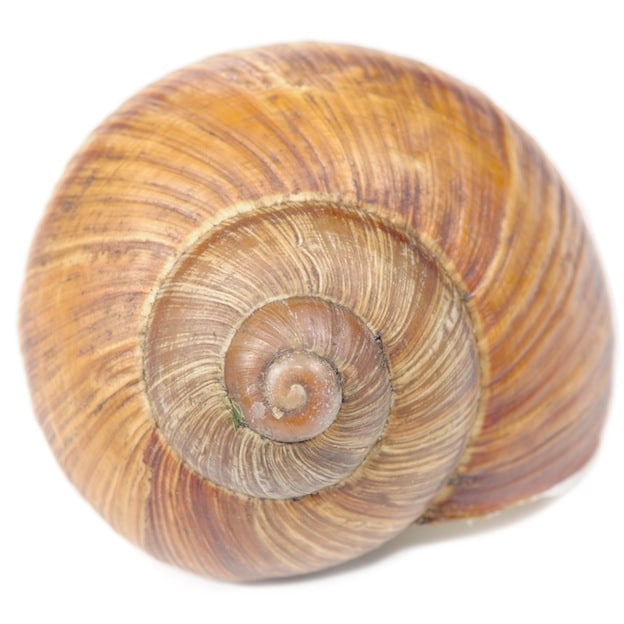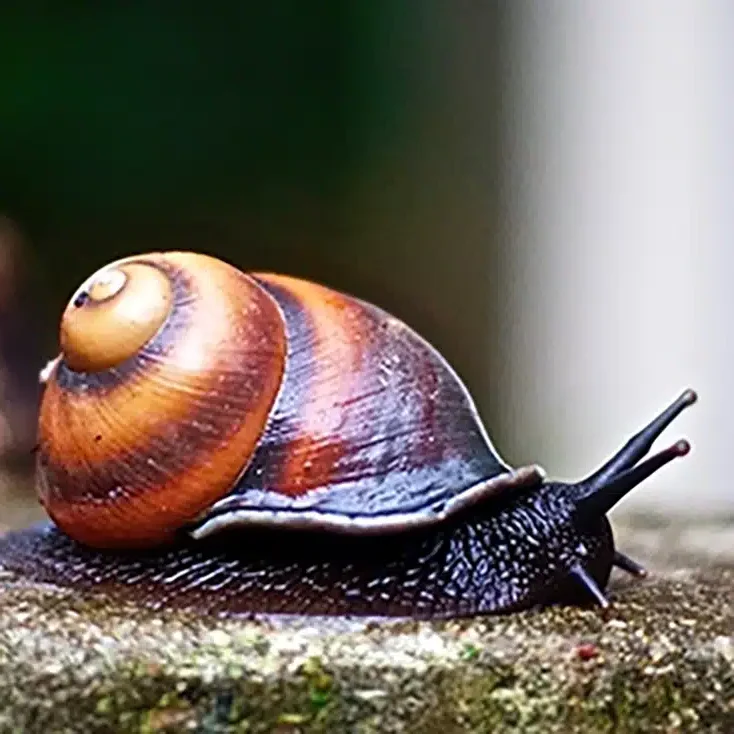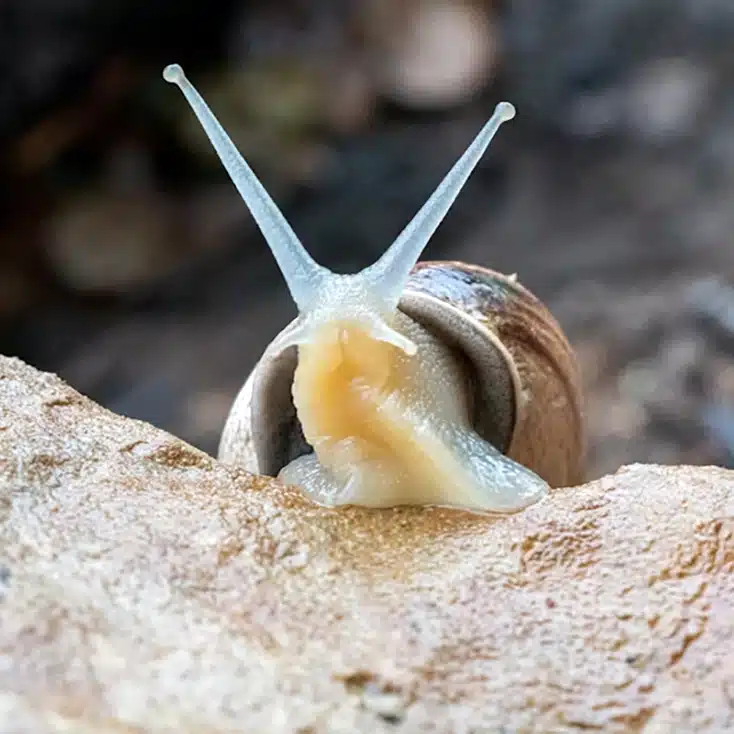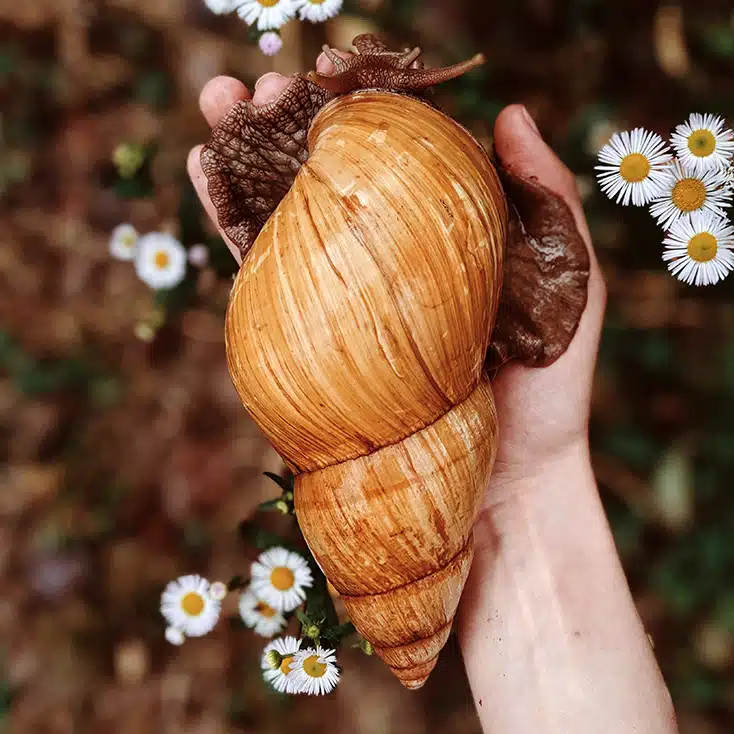There are thousands of snail species, but a few of them are widely known as the Garden Snail or the Roman Snail.
Facts and Information about Snails, Habitat, Anatomy, Reproduction, Feeding and Predators
The relationship between humans and snails is complex and ranges from being cultivated to being pest
Introduction to Snails
Snails’ ancestors are one of the earliest known types of animals in the world. There is fossil evidence of primitive gastropods dating back to the late Cambrian period; this means that they lived nearly 500 million years ago.
There are many types of snails, but they fundamentally differ because they are aquatic or terrestrial. The former are adapted to live in the sea or bodies of fresh water, but the latter live exclusively on land, although in humid areas.
All land snails are gastropod mollusks, meaning that they belong to the same group of octopuses, which are part of the phylum Mollusca. At the same time, they are members of the class Gastropoda, which includes all snails and slugs. Being a mollusk means lacking an internal skeleton and bones, but snails are not unprotected.
Gastropods can adapt to a variety of living conditions, and they don’t require large amounts of food. They have been able to continually evolve to survive the conditions around them which many researchers find to be very fascinating.
Gastropods belong to the phylum Mollusca (or Mollusks) a classification of invertebrate animals with a soft unsegmented body, sometimes covered with an exoskeleton or shell. This phylum, Mollusca, includes animals like squids, octopuses, clams and cuttlefishes among others. Snails and slugs are both Gastropods. Therefore they are closely related, regardless the fact that slugs lack a protective shell.
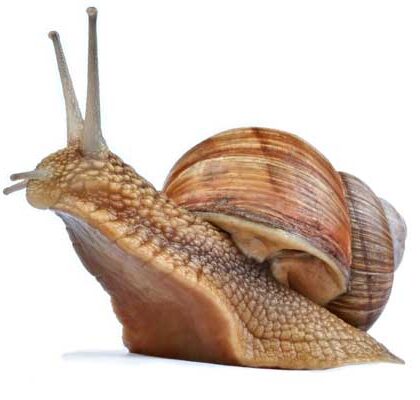
The most striking physical feature of snails is their spiral shell that they load on the back. It is a hard structure composed of calcium carbonate, which protects their soft body and internal organs. Among these organs is their lung because land snails breathe air from the atmosphere that then passes into a lung to get the oxygen; this is one of the main differences with aquatic snails, that only a few species of water snails breathe air.
You will find snails everywhere around the world. In fact, Gastropods range second, only behind insects when it comes to the number of named species. As an obvious result of this, they are found in many locations, living in a very diverse type of habitats and even having particular feeding habits.
The Earth offers a vast diversity of habitats for snails. Surely you have found tiny snails under a stone, but also climbing some stem or leaf of a plant. They can survive in natural environments or places frequented by humans, such as public parks and gardens.
Their quantity and diversity are vast. There are anything between 85,000 and 150,000 mollusks of which 80-85 percent are gastropods. Therefore, the world is home to more than 60,000 species of them.
Land snails range greatly in size. While some of them are only a few inches long and often weigh only a few ounces, there are land snails that reach almost 12 inches, like the Giant African Land Snail, a species endemic to Africa.
Although snails do not have legs, they can move thanks to a “muscular foot” that, based on wave movements, allows the snail to go from one place to another. This action is smoother and safer for snails with the help of the “mucus” that the snail secretes to slide on all types of surfaces and maintain its moisture reduces friction and avoids harms to their body.
Certainly, land snails are incredibly slow. Their forward speed depends on the species, but usually, it is between 0.5 and 0.7 inches per second. Its slowness is another feature that has made it famous, and some people have known how to play with it. For example, in many places in the UK, snail racing is organized! Can you imagine waiting for them to reach the finish line? It does not last as long as it may seem.
While moving, snails leave behind a trail of slime, a lubricant they produce to allow them to go on any terrain without injuring its body. Land Snails aren’t able to hear at all, but they have eyes and olfactory organs. They use their sense of smell to help them find food being their most important sensory organ.
You will find that snails are most active at night. They may come out during the early morning hours as well.
The biological features of snails are fascinating. For example, most are hermaphrodites, which means that a single snail has male and female reproductive organs at the same time. However, they usually mate in the “traditional” way: with a partner. A few weeks after mating and laying eggs, the hatchlings emerge from their egg, small and defenseless against many predators that sneak around, such as beetles, birds, turtles and even other snails. There are exceptions. Some species have sex differentiation, so every individual is either male or female.
The life expectancy of snails in the wild is about 3 to 7 years, but in captivity, they can live up to 10-15 years or even more.
Snail shell is made of calcium carbonate and keeps growing as long as the snail grows. They keep adding more calcium carbonate to the edge until the snail reaches adult size.
Humans have eaten land snails for centuries, although not everywhere. They are common in gastronomy, in some parts of Europe like France and Spain where they are considered a delicacy. However, their consumption must be careful, since some snails harbor parasites that, once in the human body or that of other animals, can cause severe diseases. Therefore, handling land snails, especially those found in the wild, should observe the proper hygiene precautions to avoid dangerous diseases like meningitis among others.
When snails multiply and damage crops or in some way affect the species of a region or the human being, they are considered pests. Certain species grow up to the size of an adult hand, and of course, their feeding needs also increase. That is why it is important to pay attention to the recommendations about the handling and care of snails.
In conclusion, snails are much more than a shell. On this site, we talk about land snails. Therefore we implicitly exclude freshwater and sea snails and refer only to the terrestrial gastropod mollusks that have shells.
Definitions:
Cambrian period
A period of the Paleozoic era, from 540 to 585 million years ago.
Invertebrate.
Animals that do not have a vertebral column.
Exoskeleton.
External skeleton that protects the body of an animal.
Hermaphrodites
A living organism that has reproductive organs of both sexes.
Interesting Snail Facts
- The largest land snail recorded was 12 inches long and weighed near 2 pounds.
- Garden snails (helix apersa) a top speed of 50 yards per hour, this is about 1.3 cm.
- More snail facts…
Snail Species List
